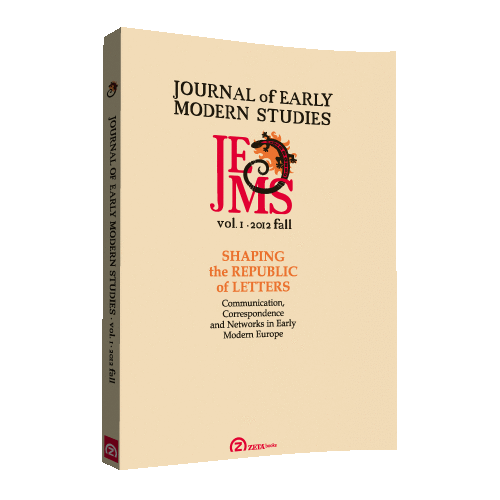
Keywords: Cartesianism; historiography; substantial forms; experiments; the invisible; metaphysics; reason; physiology
The historiography of Cartesianism often opposes Regius, a dissident empiricist medical doctor who denied the capacity of natural reason to demonstrate the immateriality and the immortality of the soul, to Descartes, a metaphysician who on the contrary grounded his philosophy in the real distinction between thinking and corporeal substance. In this contribution, I show how our understanding of this relation is modified when approaching the relation between the two men taking departure in the question of physiological experiments. Going back to some foundational texts, namely the disputations on physiology defended at the University of Utrecht from around 1640, I follow the evolution in how they dealt with three essential questions: the beating of the heart, digestion, and muscular movement, all the way until the last edition of the Philosophia naturalis in 1661. I reconstruct the prolonged dialogue between Regius and Descartes on these questions in order to show that the recourse to physiological experimentation in Regius’s work does not serve to question Descartes’s philosophy. Quite to the contrary, Regius wishes to consolidate this philosophy and purge it of its slag by responding to accusations of abstraction and dogmatism directed against a Cartesian metaphysics and physics that remove both venture to speak of the invisible. By following the aftermath of Regius’s innovations in the texts by Clerselier and De la Forge that accompany the posthumous edition of L’Homme in 1664, this contribution proposes, in short, to reconsider an interpretation of Cartesianism that is too “dualist,” by taking into account what a more empiricist reading can contribute to it.
More...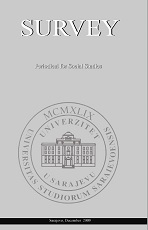
The text is a drought outlining the development of logic in Bosnia and Herzegovina through several periods of history: period of Ottoman occupation and administration of the Empire, period of Austro-Hungarian occupation and administration of the Monarchy, period of Communist regime and administration of the Socialist Republic and period from the aftermath of the aggression against the Republic of Bosnia andHerzegovina to this day (the Dayton Bosnia and Herzegovina) and administration of the International Community. For each of the aforementioned periods, the text treats the organization of education, the educational paradigm of the model, status of logic as a subject in the educational system of a period, as well as the central figures dealing with the issue of logic (as researchers, lecturers, authors) and the key works written in each of the periods, outlining theirmain ideas. Thework of aNeoplatonic philosopher Porphyry, “Introduction” (Latin: Isagoge; Arabic: Īsāġūğī), can be seen, in all periods of education in Bosnia and Herzegovina, as the main text, the principal textbook, as a motivation for logical thinking. That gave me the right to introduce the syntagm Bosnia Porphyriana.
More...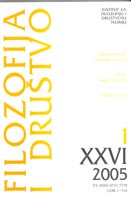
Keywords: eternal truths; principle of non-contradiction; Francisco Suarez;
This article considers Descartes’ doctrine of eternal truths, in connection with the status of the principle of non-contradiction. It is shown that there are created and uncreated eternal truths; the former are eternal truths about creatures and these truths are the object of divine will, while the latter are the truths about God himself, which are founded in his existence, so he cannot change them. Concerning the question whether the principle of non-contradiction is a created or a non-created eternal truth, different Descartes’ claims on this subject, potentially incongruent, are pointed out. Based on the fact that this principle does not have absolute validity, the conclusion is that in Descartes’ metaphysics the status of the principle of non-contradiction is not relevant, because God’s infinite power is indifferent toward it.
More...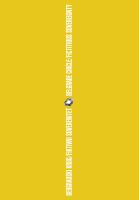
Keywords: Sovereignty
On the Development of the Idea of the Sovereign Will
More...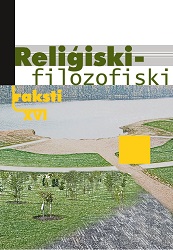
The primary spreading of Christianity and its evolvement from littleknown faith of a marginal group into the dominant ideology of Western civilization remains incompletely explained. This article describes the features of Greek-Roman culture related to Christian views and values thus facilitating pagan conversion. The existence of gods was nearly undisputed in the ancient world. Cities had official deities, and piety was considered a cardinal virtue of citizens. Polytheism being the overall form of religion, a monotheistic trend developed from the cult of Zeus, the highest god. Important political decisions were made with recourse to putative messages of gods. The ancient society was prone to believe in miracles and immortality of the soul, what helped Christian apologetics. Parmenides and Plato denied true reality to unstable and transitory empirical things and relegated it only to permanent and eternal meta- physical entities. In spite of the mainly optimistic attitude to life, some philosophers disregarded secular well-being and practised ascetics. Christians were periodically persecuted by the Roman emperors; however, Severus Alexander and Philip the Arab sympathized with their belief. The doctrine about Logos is exposed in more details. The first concept of it was contained in the pantheistic philosophy of Heraclitus. Later the Stoics attributed great importance to this concept. Their understanding was expressed by poet Aratus whose poem was cited by Apostle Paul while addressing Athenian philosophers. The Jewish religious-philosophical school of Alexandria combined the Mosaic faith with Greek philosophy. Philo of Alexandria, the chief representative of this school, arouses special interest, as he describes the events related to New Testament in geographical vicinity in the same century. The whole New Testament is written after the lifetime of Philo. According to this philosopher, God is absolutely transcendent and no properties may be attributed to him except the mere existence. God has created and governs the world with the aid of mediators, among whom Logos occupies the main and nearest place. Logos is an adequate image of God, his shadow, his first-born son. He is immaterial and imperishable, not created like the world. However, he is neither uncreated like God, and his power is not autonomous but only accredited. Logos also functions as demiurge. Philo was probably the first philosopher who understood Plato’s ideas as God’s thoughts playing the role of seals in world creation. Philo’s representation of Logos is not without contradictions: Logos is said to be disseminated in creatures and to perform personal roles, too. The New Testament, especially the Gospel of St.John, presents a similar teaching about Logos. The Christian creed differs insofar it proclaims the equality of Logos to the Father and his supernatural incorporation in the person of Christ.
More...Ekklesiologie und Thetorik im Lebenswerk des Erzbischofs Pázmány Péter. Die Rolle der Ekklesiologie in den verschiedensten Schriften von Péter Pázmány ist der Kirchen- und Literaturgeschichte wohl bekannt, aber der Zusammenhang zwischen Ekklesiologie und Rhetorik wurde noch nicht erforscht. Unser Aufsatz versucht die rhetorischen Redefiguren der Kirchenlehre des ungarischen Theologe sichtbar machen und dadurch den Charakter dieser Ekklesiologie beleuchten. Im Mittelpunkt der europäischen theologischen Polemik der Reformationszeit stand die Frage der „wahren Kirche”, Pázmány schloß sich mit seiner ersten – noch lateinsprachigen – Streitschrift (Diatriba theologica, 1605) an diesen Themenkreis an. Hier spielt der Autor die Rolle eines Moderators, er zitiert die Meinungen der protestantischen und katholischen Theologen und versucht die Wiedersprüche vom protestantischen Standpunkt nachweisen. Das Hauptwerk von ihm, der Wegweiser zur göttlichen Wahrheit (Isteni igazságra vezérlő Kalauz, 1613) ist eine theologische Synthese, darin entfaltete er seine vollständige Ekklesiologie (Buch VIII. und IX.). Später behandelte er in seiner polemischen Schrift Zwei kurze Büchlein (Két rövid könyvecskék, 1626) die vier Kennzeichen der „wahren Kirche” (una, sancta, catholica, apostolica). Seine Redeweise (modus dicendi) ist dabei bildhaft, konkret und volkstümlich. In seinem Predigt über das „Schiff der wahren Kirche” entfaltet der Erzbischof seine Lehre durch das traditionelle Motiv „navis ecclesiae”. Der Ausgangspunkt (exordium) ist der biblische Text (Matth. 8,23), darauf folgt die Identifikation (narratio): die Kirche ist ein Schiff, die Welt ist ein Meer, die Not und das Elend dieser Welt sind die Wellen und der Sturm usw. Die Aufzählung der Ähnlichkeiten wird zur Allegorese erweitert. Die Aufgliederung (partitio, divisio) besteht aus einer Antithese: die wahre Kirche ist unbesiegbar, obwohl sie immer in Gefahr ist. Seine Ekklesiologie ist als Auseinandersetzung mit dem Protestantismus durch eine sinnbildliche Darstellung gestaltet und die muttersprachliche theologische Terminologie wurde dadurch reicher und nuancierter. Die Wirkung des Rekatholisierungsprozesses ist durch Beitrag der ausgezeichneten rhetorischen Bildung von Pázmány im bedeutenden Maße verstärkt.
More...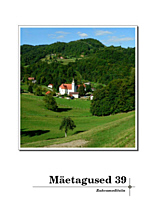
Keywords: 17th century disputations; history of medicine; medical education at the University of Tartu in the Swedish period; "Stregensis" by Andreas Arvid; studying at Academia Gustaviana Dorpatensis
The present article deals with a medical disputation, written and defended at the University of Tartu during its first period of activity in the 17th century, when the university was called Academia Gustaviana. More precisely, under investigation is the disputation of the Swedish poetry theorist Andreas Arvidi (ca 1620–1673), De natura et constitutione medicinae and its context. The medical education was at the insufficient level at most 17th-century universities in Europe and this was the case at the University of Tartu as well. There were very few students of medicine at the University of Tartu during the Academia Gustaviana period (eight, all in all) compared to the whole number of students (1056) during that time. Only two of these eight students were afterwards active as physicians. There were but few medical disputations defended during the Academia Gustaviana period, of which two were solely medical, supervised by the professor of medicine Sebastian Wirdig. The first of these, the disputation by Andreas Arvidi, deals with medicine in general. Andreas Arvidi was not a medical student but studied natural sciences at the University of Tartu. As a person of great talent, he debated on a variety of themes, including astronomy, mathematics, botany, medicine and ethics. His disputation De natura et constitutione medicinae is explaining the meaning of the word ‘medicine’ by exposing its etymology and providing synonyms and homonyms to this word. In defining medicine he quotes Jean Fernel, the famous French Renaissance physician. Then he discusses the reasons and purposes for inventing medicine and finally presents the systematisation of medicine. The whole work reveals the author’s brilliant knowledge of Greek and Roman authors, as well as of contemporary medical authorities. Of the latter ones, iatrochemist Daniel Sennert, professor at Wittenberg University, has been quoted on several occasions, which implies to the fact that Sennert was an authority in the 17th-century Faculty of Medicine in Tartu. Andreas Arvidi’s disputation De natura et constitutione medicinae is a work that gives the broadest overview of medical thought at the University of Tartu in the 17th century.
More...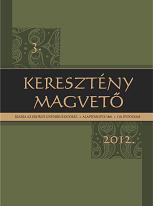
Keywords: Altdorf; unitarianism;
The paper gives a review of those relations that came to existence between the University of Nürnberg founded at end of the 16th century and the Transylvanian Unitarians. Th e paper concludes that aft er the storms of the Fift een Years’ War it became essential for the reshuffl ing Transylvanian Unitarians to fi nd a university where they can send their students. Th is must be explaining the fact that among the members of the group from Kolozsvár visiting Altdorf in 1608 were not only students, but most probably also members of a delegation of the town. Furthermore the paper shows that until the early 1620s more Unitarian students studied here for mostly a shorter period. Th e paper focuses on János Varsolczi enumerating documents about his activity and erudition. Th e closing part of the paper proves that in the surroundings of Erns Soner, the famous professor of Aldorf one can fi nd not only Socinian authors, but also the Trasnylvanian radical Nonadorantist tendencies, which were so familiar amongst the Antitrinitarians in Transylvania. Th e author primarily refers to Martin Seidel and his texts. It was long-known that Simon Pécsi wanted to acquire for himself the manuscript of his most radical work. Th is recent paper also publishes new data and deliberation about this episode.
More...
Keywords: thought; sixteenth century; public education; learning; philosophy; teaching mterial; descriptive analysis; imitation
Within the context of the increasing interest in sensory perception during the period from 1450 to 1650, we fi nd an unexpected phenomenon: an astonishing tendency to render dependent on linguistic usage the common understanding of things, beings, and facts of nature or the environment.1 Evidence of this can be found in a wide variety of reference works relating either to dialectics or to the methodology of learning, the ratio studiorum,2 or again in conceptually structured encyclopaedias of universal knowledge.3 Through an analysis of Aristotelian texts used in schools, the present study provides evidence of the reciprocal relationship between the dynamic, highly individual process of ‘learning through experience’4 and the constraints of the existing terminology. By concentrating specifi cally on the learning process, it becomes possible to recognise the normative or quasi-normative principles on which teaching methods were based. The precise manner in which these affected perception comes to light, refl exively as it were, through an examination of the measures that were employed for training the senses. By this means, it will be possible to describe more clearly the contribution of the senses to the learning process that was formulated conceptually and employed in the teaching of philosophy in the 16th century universities and academies with the express goal of understanding the universe.
More...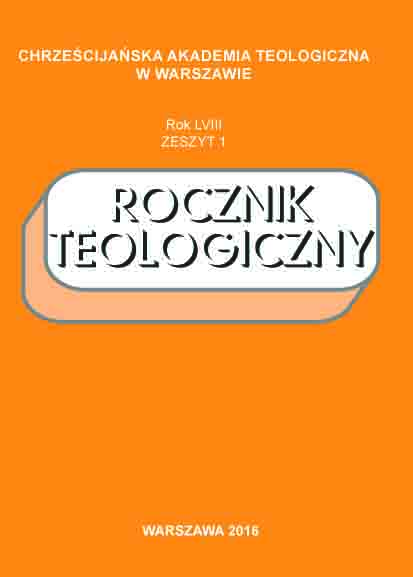
Keywords: Arminianizm; Ewangelikalizm; Kalwinizm; Łaska; Predestynacja; Zbawienie;
The evangelical theology is not monolith in some areas. One of the evidence for such statement is the existence of two great traditions in evangelical bosom, namely Calvinism and Arminianism. The article presents the evangelical Arminianism in order to show that it is an alternative side of the evangelical Protestantism. The author starts from historical-theological perspective, exposing the soteriology of Jacob Arminius and his followers (so-called Remonstrants) as the main source of modern evangelical Arminian thought. The next part contains the presentation of views of Arminian theologians (F. Leroy Forlines, Robert E. Picirilli, Jack Cottrell, I. Howard Marschall, Roger E. Olson). The analysis, which has been made, indicates that the representatives of this theological stream believe in total depravity of human nature, Christ’s universal atonement and the particular application of redemption, the necessity of God’s grace, which is not irresistible in its nature, and in conditional predestination, which is realized in the saving union with Christ. Moreover, the author includes the Arminian exegesis of three biblical passages that relate to the operation of grace (John 6: 37.39.44); eternal predestination (Eph 1: 3-14); and the extent of the universal salvific will of God and the atonement (1Tim 2: 1-6).
More...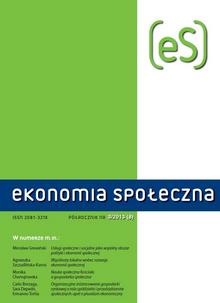
Keywords: social economy; social teaching; Catholic Church
W niniejszym artykule – dotyczącym związku między nauką społeczną Kościoła a gospodarką społeczną – starano się wykazać zasadniczą zgodność założeń między postulatami przedstawianymi przez Kościół katolicki a podstawami, na których opiera się gospodarka społeczna. W pierwszej części artykułu udzielono odpowiedzi na pytanie, czym jest katolicka nauka społeczna, jaką metodologią się posługuje oraz jaki jest jej związek z innymi dyscyplinami naukowymi. W ujęciu tabelarycznym zaprezentowano głównych przedstawicieli katolickiej myśli społecznej i ich zainteresowania oraz dzieła. Następnie przybliżono Czytelnikowi pojęcie gospodarki społecznej, jej główne założenia, aby przejść do omówienia zasad katolickiej nauki społecznej, które są identyczne bądź zbliżone do tych, na jakich opiera się gospodarka społeczna. Uczyniono to bazując na wybranych oficjalnych dokumentach Kościoła katolickiego.
More...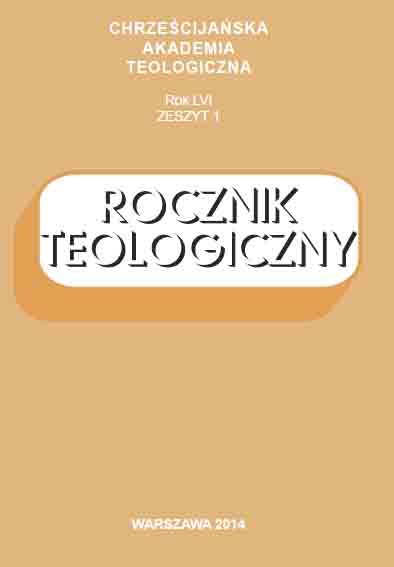
Keywords: „Edykt Mediolański”; liturgika; tradycja liturgiczna; nabożeństwa chrześcijańskie; Bizancjum; reguły modlitewne
W 313 roku cesarze Licyniusz i Konstantyn Wielki skierowali list do zarządców wschodnich prowincji, w którym przyznali chrześcijanom prawo swobodnego wyznawania wiary. Dokument ten stał się znany jako tzw. „Edykt Mediolański” i bezpośrednio wpłynął na dynamiczny rozwój Kościoła.W niniejszym artykule spróbujemy odpowiedzieć na pytanie, w jaki sposób „Edykt Mediolański” wpłynął na chrześcijańską tradycję liturgiczną? Artykuł wskaże rozwój pisemnej tradycji, zmiany w architekturze sakralnej i ich wpływ na rozwój praktyki liturgicznej. W tekście zostaną również ukazane najbardziej charakterystyczne nowe elementy chrześcijańskiej tradycji liturgicznej IV i początków V wieku.
More...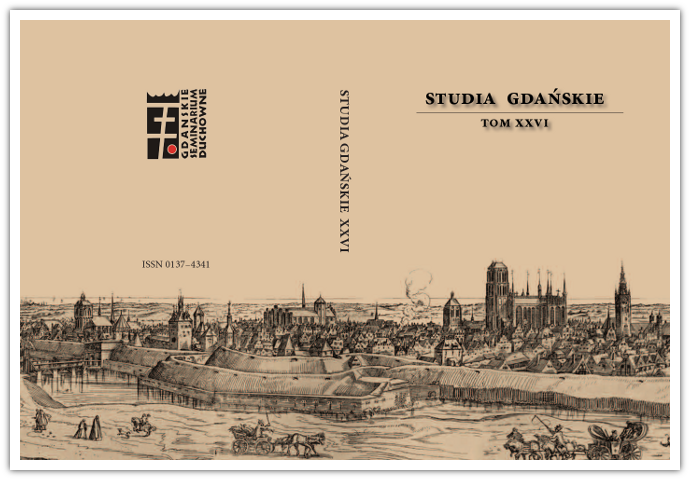
Keywords: Paprocki Bartosz; “The Coats of Arms of Polish Knighthood”; the Council of Trent; priesthood; priest virtues
XVI‑wieczne dzieło Bartosza Paprockiego „Herby rycerstwa polskiego” było wielokrotnie przedmiotem badań historyków, genealogów czy heraldyków. Autorka zwraca uwagę na religijno‑historyczny kontekst powstania dzieła: reformację i postanowienia soboru trydenckiego – zwłaszcza na naukę o sakramencie kapłaństwa, a także starożytne i średniowieczne pisma poświęcone moralnemu ideałowi duchownych. W tym właśnie kontekście analizuje sposób prezentowania w „Herbach” osób duchownych, zwłaszcza ich cnót kapłańskich.
More...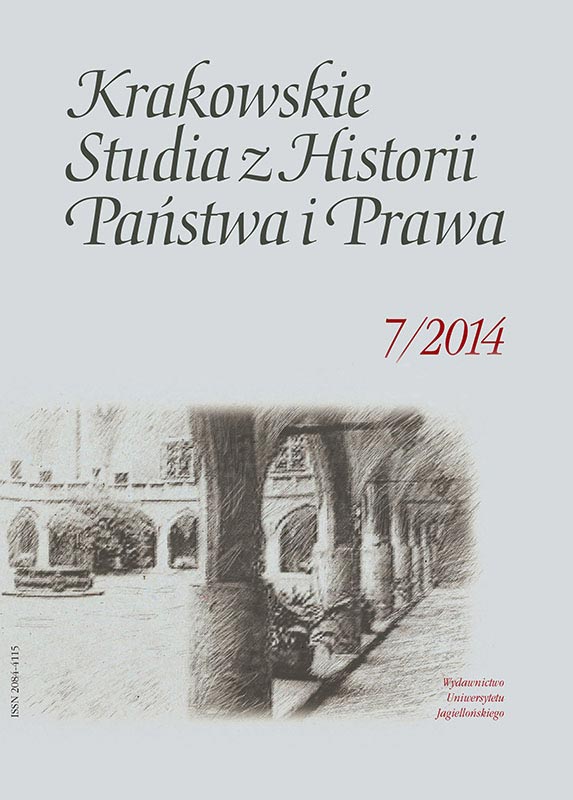
Keywords: justice; suum cuique; Roman law; drama; Shakespeare; Mülle
The phrase suum cuique as an incarnation of “justice,” like many other Latin dicta, is deeply enrooted in the mental consciousness of mankind, and it lives its own life as a part of the so-called universal culture. Generally speaking, reference to Roman justice served and still serves as a justification of one’s own actions when such actions cannot defend themselves by their own formal correctness. It is, therefore, recourse to the eternal values, the understanding of which, however, is determined by one’s own experience or by experience of a particular epoch. This is proved by words of the authors mentioned in the title of the study, though separated from each other by several centuries and having different visions of the world, they considered the embodiment of this phenomenon in the phrase suum cuique as the most appropriate for their own narrative and judgmental description of the reality. Shakespeare, although he undoubtedly saw in Roman justice a guarantee of justification of certain actions, referred to this idea without a deeper analysis. Müller, one of the most important German dramatists of the second half of the 20th century, screaming through the voice of Tamora, who demands “Roman justice,” showed that a call for Roman fundamenta as well as for Roman iura et mores almost for the last time stands in the unsolved conflict with one’s own inhumane actions and inflation of all values that mankind has persistently considered as permanent.The article aims to analyse a cultural commentary on the use of the phrase suum cuique – a commentary understood as a way of bringing something that is analysed into the reality current for a commentator. In one dimension, this can be a dramatic comment rather than a simple description of a certain reality. Therefore, such a commentary should not be assigned only to a single commentator-narrator but to many who represent different eras.
More...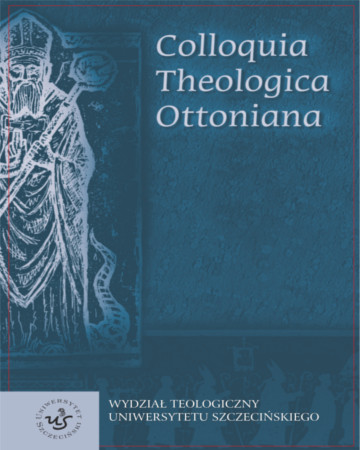
Keywords: Jesuit epigram; Jacob Masen’s theory; epigrams about the death of Judas; argutia sources; conceptual poetry
The theory which Jacob Masen presented in the work Ars nova argutiarum was well considered by him. The author wanted to present a diversity of possibilities which enabled building the argutia; he also attempted to arrange their multiplicity in clearly structured categories. He was interested in making reference to those acumens which occur in the grounds of the depicted reality as well as those which are based on the lingual devices. The whole of the lecture is strongly rooted in the philosophical analyses belonging to the old dialectics; it is especially based on Categories by Aristotle. Without a doubt, the lecture places itself in that scope of poetics which refers to a sophisticated poetry. The author leads the reader step by step, disclosing to him more new possibilities of creating the argutia. It is worth noticing that he generally makes references to the same contents. Within the scope of the presented epigrammatic cycle, especially to the Judas’ suicidal death. Skilfully infl uencing the fl ow of thoughts, controlling the occurring associations, using the game of words allowed the author to develop a rich epigrammatic collection. The works do not always present a proper level of artistry. They happen to be too simple in what they communicate. However, there are also such works which cause the intended surprise and joy of disclosing a thought conveyed in a veiled form by the poet. It is diffi - cult to determine whether Masen’s belief that actually every argutia can be assigned to the sources specifi ed by him is true. However, without a doubt he left an important tool for carrying literary research on this scope of Baroque literary works which used acumens. The question whether the theory presented by the Jesuit is an introduction into the poetic art or already a lecture on the sophisticated art still remains unanswered and a problem to solve. The epigrams concerned are not subjected to graphical forms. Apart from the fourth source, they generally lack solutions typical for the sophisticated poetry such as, for example, anagram. The presented epigrams do however contain something typical for the very essence of the sophisticated poetry. As a matter of fact, a juxtaposition of its vari ous forms shows that in each of them a line is assigned to a certain scheme, adopted by the poet. Generally, it is a graphical scheme, sometimes a scheme based on a game of letters or metrical devices. In case of Masen, it is also a certain scheme. However, this scheme is not related to the external layer of the work but it lies at its foundation. The point is that it concerns internal assumptions, the course of thinking and logical associations.
More...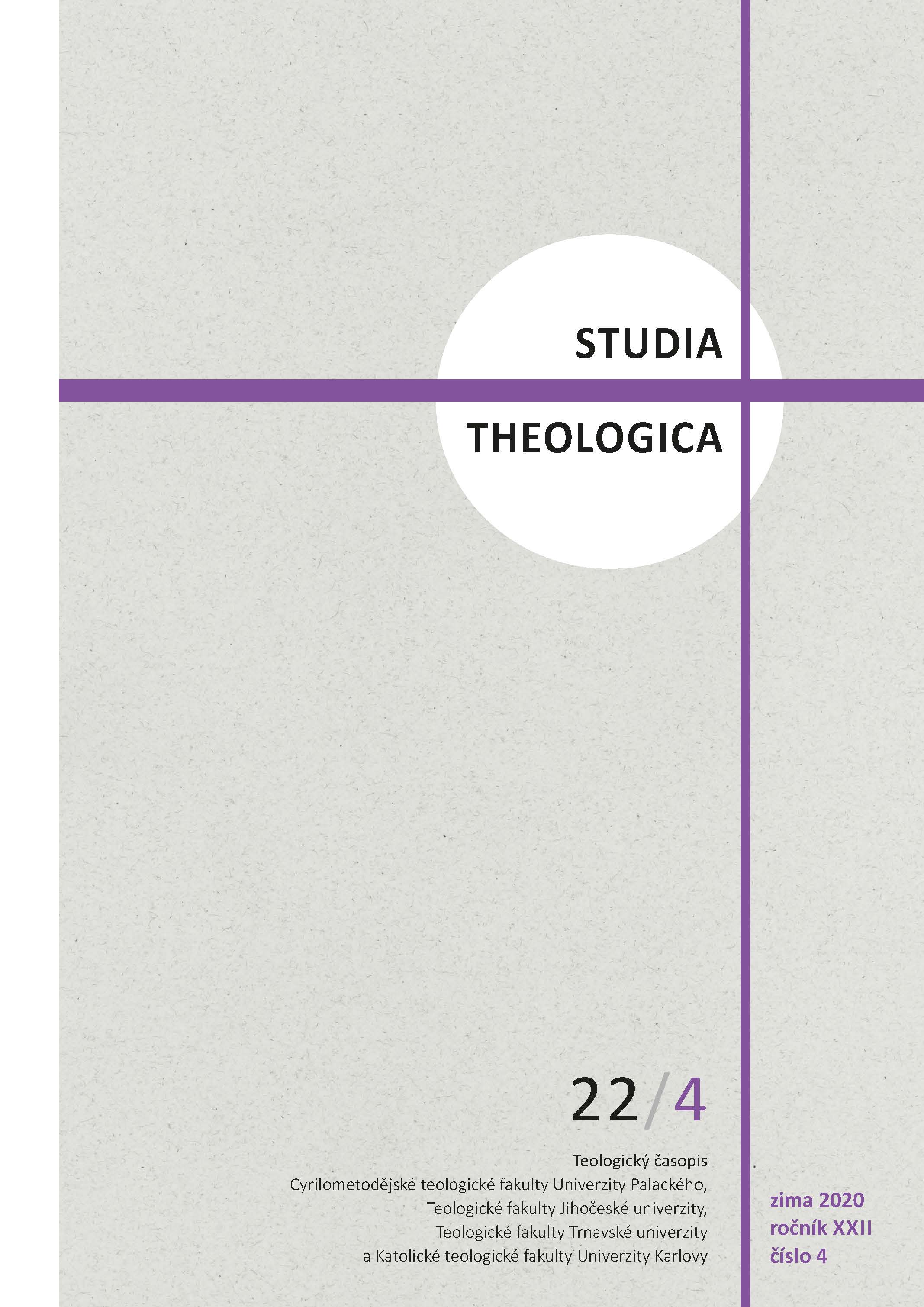
Keywords: Isidoro Isolani; Jean Gerson; Summa de donis sancti Ioseph; Saint Joseph; Josepho-logy; Nature of Theology; Dominicans; Thomism;
The article begins with a brief description of the development of the cult of Saint Joseph and a doctrine that maturated in the work of Jean Gerson (1363‒1429) and the Dominican friar Isidoro Isolani (ca. 1477/1484‒ca. 1528). It subsequently tracts the life of Isidoro Isolani and the outline of his work. It consequently focuses on Isolani’s most famous work, i.e. Summa de donis sancti Ioseph (1522), which is the first theological treatise on Saint Joseph. It discusses its origin, sources, content, speculative affective character, prophetic elements and editions. An evaluation of the Summa is indicated in the conclu¬sion. Although it is a fruit of its day, it also exceeds its time and remains a good means of knowledge about Saint Joseph. The main goal of the article is a quasi encyclopaedical presentation of this work and its author.
More...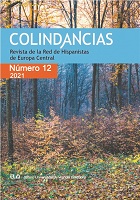
Keywords: Don Quixote; Cervantes; Literary Sources; Epicureanism; Cicero; Aristotle; Seneca; Horace;
The possibility of glossing specific aspects of the history of Don Quixote from the source from which Cervantes’s inspiration could spring, opens new boundaries in the enjoyment and use of the masterpiece of Spanish Literature. It’s not just only an alternative way of discovering and endorsing deep nuances of the author that critics have intuited or discovered in other ways, and that with this supplementary aid gain greater strength; it also implies a better understanding of the difficulty that Cervantes himself revealed in the prologue of his second installment with the tales of madmen and a technical explanation of how he managed to reach the height of a masterpiece, so rich and full of universal ideas, reasons and contents.
More...Keywords: philosophy; science; René Descartes; Traité de Physique.; review; Jacques Rohault;
Review of Jacques Rohault‘s preface to the Traité de Physique.
More...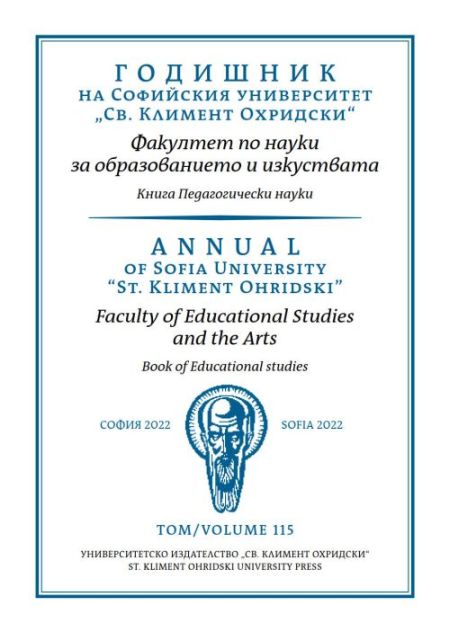
Keywords: concepts of nature; environmental education; education for sustainable development (ESD); attachment theory; inner working models; world views; the idea of man (Menschenbilder); organon model
Through being in a relationship with the world, diverse but extremely differentiable concepts of nature arise based on bonding, attachment and learning processes. This paper takes up existing concepts of nature as worldviews and, based on attachment-theoretical considerations, shows how inner working models emerge, each of which promotes and forms a specific understanding of nature. It can be shown that the respective configurations of nature concepts are closely and deeply connected with the personal and cultural attachment and relationship styles. The article provides an in-depth introduction to attachment theory and the organon model, both are used to clarify the phenomena, as are the attachment theory and the cultural-theoretical analyzes of biophilia. Based on the phenomenological discussion, learning-theoretical derivations are possible, which enable an extended understanding of transformative learning processes through inner working models about being human and being nature. Based on the integrative view of the phenomena, a modeling of the relations of nature concepts is offered as a finding. The article concludes with a reference to the fact that the human subject always includes and reflects on himself as soon as he thinks about his own relationship with the world.
More...